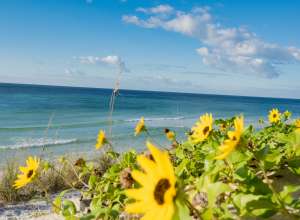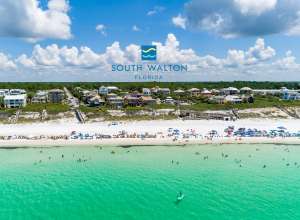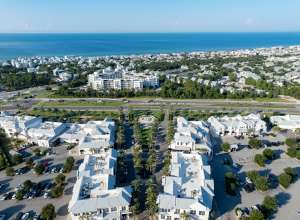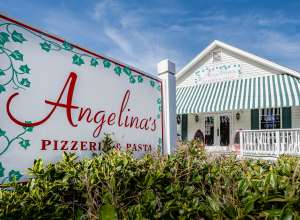Story
McCullough Shrimping Is A Family Affair
July 27, 2011 by SoWal Staff
It's nearing twilight and the McCullough clan of Portland, Fla. prepares to send its crew off to man the night's run of the Capt. Wil-B, the family's shrimp boat.
This ritual takes place six days a week. Fuel has already been loaded into the boat's tanks from a fuel truck that visits the dock. Crushed ice to chill the catch is in chests ready to take to the boat, and the crew members have a supply of food to provide a meal through the long night ahead.
Junior (William) McCullough and brother Bruce live side by side in small homes. Junior has no children but Bruce and wife Tina parent a brood of nine children: Brittany, Kyle, Nathan, Caleb, Henry, Spencer, Abby, Ethan and Olivia. Together they provide for the family by operating a seafood business. Normally Junior captains the boat; Bruce handles sales and business matters from a freezer equipped building on the property (customers can buy really good shrimp here); and the older boys rotate duty as crew on the boat. This day Kyle, Henry and Spencer fill the crew slots.
The Capt. Wil-B was built in Tampa in 1973 with an expected work life of about 10 years. Eventually the hull deteriorated and the boat was taken out of service. Sometime later, the McCulloughs found it, bought it and started a rebuild program. They put it in dry dock, stripped the hull planking from the boat, completely re-planked using juniper lumber, and brought the boat, now at 62 feet overall length, to seaworthy standards.
 When the crew arrives at the boat dock on Four Mile Creek, Junior goes below, checks the engine and starts it up. On deck, the crew load the ice, and check the rigging. Radios monitoring several channels, radar, GPS navigation and a depth finder are activated. When all is ready, the boat casts off, starts for Choctawhatchee Bay and soon lowers its outriggers for the night's work.
When the crew arrives at the boat dock on Four Mile Creek, Junior goes below, checks the engine and starts it up. On deck, the crew load the ice, and check the rigging. Radios monitoring several channels, radar, GPS navigation and a depth finder are activated. When all is ready, the boat casts off, starts for Choctawhatchee Bay and soon lowers its outriggers for the night's work.
Near the Mid-Bay Bridge the nets, which are equipped with turtle exclusion devices (TEDs) are deployed and the Capt. Wil-B starts the first of several two-and-a-half to three-hour netting runs (drags). Between the drags, crew members catch naps on bunks in the boat's cabin.
At the end of each drag the nets are recovered and the catch is dumped onto the sloped culling deck at the stern of the boat. As soon as the nets are emptied, they are returned to the water to continue the night's work.
Sitting on low stools that have shorter legs on one side than the other to compensate for the slope of the deck, and using aluminum culling rakes, the crew sort the shrimp, crabs and squid from the by-catch taking about 40 minutes to do the job. Shrimp are graded into small and large sizes and collected in plastic baskets as are squid and large crabs. Small crabs, along with the rest of the by-catch are raked through discharge ports back into the Bay.
The Bay's dolphin community is well aware of the by-catch bounty and groups, including some very large animals, gather on each side at the stern of the boat where they push and shove, even bumping the boat, in the scramble for an easy supper.
After the last drag the Capt. Wil-B starts for home, arriving back at the dock after daybreak, having been more than 12 hours on the water completing the night's work.
Story and photos by Ben Grafton, courtesy DeFuniak Herald / Beach Breeze














